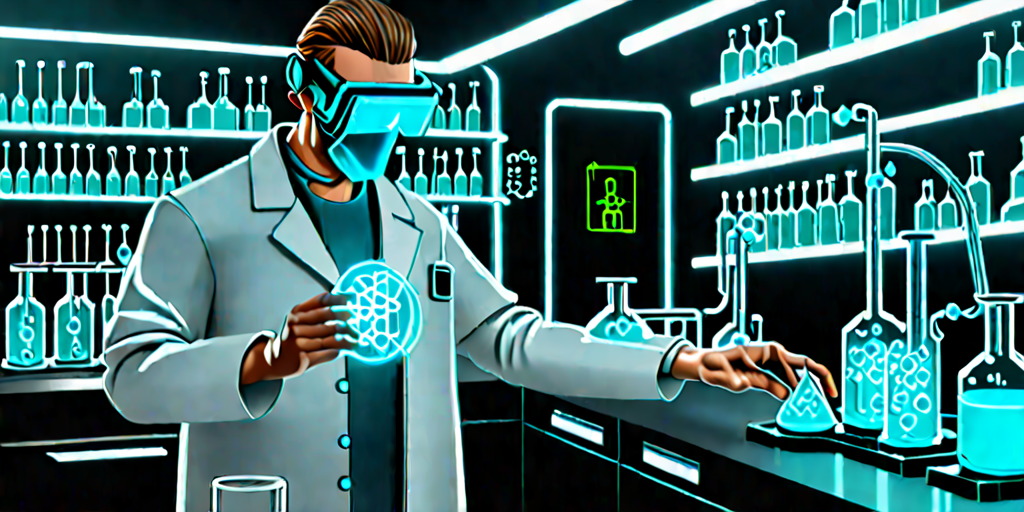
Pills and Solutions
AI is all the rage right now. From ChatGPT to DeepSeek R1, every company
and organization is looking for a solution that AI is the answer. While many
heads of IT are moving forward with varying solutions, the first question
really should be 'Why'.

At first glance it's an easy enough question. Some will say, "to stay ahead of the
competition". While others will say, "being more efficient". Brutally honest will say,
"to reduce the workforce". It would be justifiable to accept these answers, but it's
not really what AI is being built for. May I propose the obvious reason, the reason
we tend to gloss over...to augment humanity.
AI In The Laboratory
Most labs are looking for AI to address staffing and quantity issues. In fact, a
recent article in Sci Tech Daily raises these issues. Many of the instruments in the
labs these days have automation. However, none of these automations are
complete systems, working from receiving to testing to disposal. It's not that we
should be pushing towards this goal; it's just the wrong job for AI.
Machine Learning VS Artificial Intelligence
Automation is a perfect use case for Machine Learning (ML). With ML, you can
create an assembly line of chemical processing. It doesn't require advance
computing and difficult programming. In fact, many ML automations are so simple
they can be run on low-end computers. Most solutions in the lab could take
advantage of ML automation.
AI is a different story. It's massively expensive and difficult to develop. It requires
hardware that is almost cost-prohibitive in a lab automation scenario. What AI is
better used for is qualitative analysis. Feeding AI with loads of passed successful
results and a smattering of failed results will train the AI to see patterns. These
patterns can then be extrapolated against current results and assert whether a
result was conducted correctly.
A Better AI Use Case
Augmentation is the goal for AI. As humans, we have a hard time with
objectiveness, and our own personal bias can get in the way. Using AI to augment
humans can reduce that bias. This is to say that humans aren't the problem; they
just need to have all the facts. AI is able to reduce large datasets into a more
palatable packet of information that humans are able to work with better.
Take, for instance, Cisco, the network company. They just announced their AI
product built-into their networking equipment. What was a difficult process for a
network engineer to write rules for routing data packets around a network has
become now a natural language request. Cisco's AI reduced the large number of
commands to natural language for humans to perform complex tasks in a simple
format.
AI In The Laboratory
In essence, the lab needs to do the same thing. Labs are filled with Standard
Operating Systems, procedures, and methods. It takes months to get the average
lab technician or chemist weeks to months to be trained in that lab. Lost
productivity just to train or even retrain. A better way would have AI available for
that individual to guide them through the process, providing highlights from
procedures and simple checklists to perform. With in or even adjacent to the
Laboratory Information Management System, AI would augment the process that
the lab is performing. Being provided with each step or guideline every step of
the way. Thus increasing production, providing better consistency, and faster
turn-around times.
First Steps
Currently, Compounder's International Analytical Laboratory (CIAL) is building
such a lab augmentation system. Over the last few months, we have started to
train AI in our Standard Operating Systems, procedures, and methods. Since we
are building a on-premises solution for the lab, it provides data protection and
privacy for our customers. The AI will soon be able to provide our lab with
guidance as they perform testing. While this is an adjacent application to our
Laboratory Information Management System, it will nevertheless bridge the gap
between procedure and practice.
In the coming year, we will be refining the AI training and thus more perfecting the
augmentation. Indirectly, the hope will be to accomplish better testing
consistency, reduce Out-Of-Spec results, and increase turn-around times for our
customers.
